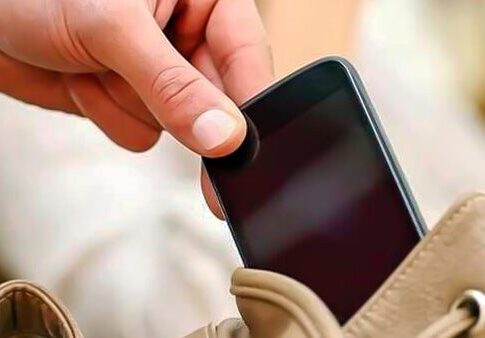Losing a phone isn’t just about the physical loss of a device; it’s a disruption to much of our digital lives. Phones today hold everything from emails and social media accounts to banking information and cherished photos. In places like Britain, where phone thefts have become rampant, it’s crucial to know the steps to protect yourself and your data if your phone goes missing.
Proactive Measures: Preparing for the Worst; Before your phone ever goes missing, there are several protective steps you can take to minimize the impact:
1. Secure Your Device: Always have a password, PIN, or biometric lock (such as fingerprint or facial recognition) set up. Additionally, apply similar security measures to individual apps, especially those related to finances or personal communication.
2. Enable Tracking Services: Both Android and iOS offer built-in tracking services. Make sure “Find My iPhone” is enabled on iOS devices and “Find My Device” on Android phones. Samsung users can also use the SmartThings Find feature.
3. Back-Up Your Data: Regularly backup your photos, contacts, and important files. Use cloud services like Google Drive or iCloud, but also consider a physical backup to an external hard drive for extra security.
4. Manage Notifications: Turn off message previews on your lock screen to prevent thieves from seeing sensitive information like login codes.
5. Utilize New Security Features: With the latest updates, iOS offers Stolen Device Protection, making it harder for thieves to reset stolen phones. Meanwhile, newer Android devices can detect motion patterns indicating theft, locking the phone instantly.
6. Document Your Device Information: Record your phone‘s IMEI number, which is crucial for identifying your device. You can find it by dialing *#06# on most phones, or check the original packaging.
Immediate Actions: If Your Phone is Stolen or Lost; If your phone goes missing, act swiftly to mitigate risks:
1. Notify Authorities and Insurers: Report the theft to the local police and your insurance company if your policy covers phone theft.
2. Contact Your Phone Carrier: Inform your service provider to suspend your service and possibly issue a replacement SIM card.
3. Alert Your Bank: Notify your bank to monitor your accounts for unusual activity.
4. Attempt to Locate Your Device: Use the tracking service associated with your phone. For iPhones, visit iCloud.com/find; Android users can go to google.com/android/find. These services can show your phone‘s location or play a sound to help you locate it nearby.
5. Activate Lost Mode: This feature locks your phone and displays a custom message and contact details on the screen. For iPhones, this also suspends Apple Pay.
6. Avoid Confrontation: If your phone appears to be in an unfamiliar location, contact the police rather than attempting to retrieve it yourself.
Final Steps: If Recovery Is Impossible; If you cannot recover your phone, take these final security measures:
1. Log Out of Accounts: Remotely log out of apps and services that you use on your phone to prevent unauthorized access.
2. Remove Trusted Device Status: Ensure your phone is no longer listed as a trusted device for receiving multi factor authentication codes.
3. Remote Erase: As a last resort, use the remote wipe feature to erase all data on your phone. Note that on iPhones, this action will occur once the device is online. For Android phones, remember that SD cards may not be wiped remotely.
Losing a phone can be stressful, but by taking these steps, you can protect your personal information and reduce the impact on your digital life.



